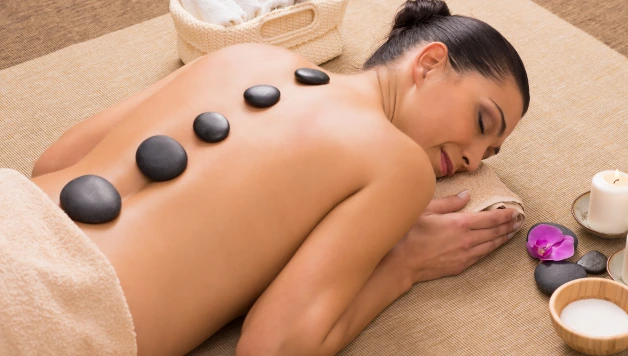Menopause is a natural phase in a woman’s life, signaling the end of her reproductive years. However, hormonal changes during menopause can lead to various uncomfortable symptoms, including hot flashes. Many women seek relief from these symptoms through different methods, and one alternative therapy that has gained attention is massage therapy. Let’s delve into the effectiveness of massage therapy for menopause symptoms, particularly hot flashes, exploring its potential benefits and limitations.
Understanding Menopause and Hot Flashes
Menopause typically occurs between the ages of 45 and 55, with the average age being 51. During this time, a woman’s ovaries gradually reduce the production of estrogen and progesterone, leading to the end of menstrual cycles and fertility. As hormone levels fluctuate, various symptoms may emerge, such as mood swings, sleep disturbances, vaginal dryness, and hot flashes.
Hot flashes, or vasomotor symptoms, are characterized by sudden sensations of heat that radiate throughout the body. These episodes can last for a few seconds to several minutes, accompanied by profuse sweating, rapid heartbeat, and a flushed appearance. The frequency and intensity of hot flashes vary among women, with some experiencing them multiple times a day.
The Role of Massage Therapy
Massage therapy is an ancient healing practice that involves applying pressure, kneading, and manipulation of muscles and soft tissues to promote relaxation and alleviate pain. Its potential to alleviate menopause symptoms, including hot flashes, lies in its ability to reduce stress, improve circulation, and affect the autonomic nervous system.
Stress Reduction
Stress can exacerbate menopause symptoms, including hot flashes. Massage therapy promotes relaxation by reducing stress hormones such as cortisol and releasing neurotransmitters like serotonin and dopamine, leading to a sense of calm and well-being. Studies have shown that regular massage sessions can help decrease stress and anxiety levels, potentially alleviating the intensity and frequency of hot flashes.
Improved Circulation
Massage therapy improves blood circulation by stimulating blood flow to various parts of the body. This enhanced circulation can alleviate symptoms related to reduced blood flow during menopause, such as headaches, dizziness, and fatigue. Additionally, improved circulation may help regulate body temperature and minimize the severity of hot flashes.
Autonomic Nervous System Effects
The autonomic nervous system controls involuntary bodily functions, including heart rate, blood pressure, and body temperature. Massage therapy can influence this system, promoting a balance between the sympathetic (fight-or-flight) and parasympathetic (rest-and-digest) branches. As a result, massage may help regulate body temperature and reduce the intensity of hot flashes.
Research on Massage Therapy and Hot Flashes
While there is a growing interest in using massage therapy as a complementary treatment for menopause symptoms, including hot flashes, the scientific evidence is somewhat limited. Several studies have explored the potential benefits of massage therapy for menopause symptoms, but more robust research is needed to draw definitive conclusions. Here are some noteworthy findings:
2014 Pilot Study
A pilot study published in the International Journal of Therapeutic Massage and Bodywork in 2014 investigated the effects of Swedish massage on menopausal symptoms in 25 postmenopausal women. The participants received 45-minute massage sessions twice a week for four weeks. The results showed a significant reduction in the frequency and severity of hot flashes, along with improvements in sleep quality and overall well-being.
2017 Randomized Controlled Trial
A randomized controlled trial published in Menopause: The Journal of The North American Menopause Society in 2017 examined the effects of acupressure versus Swedish massage on hot flashes in 120 postmenopausal women. The participants received 20-minute sessions twice a week for five weeks. Both groups experienced reduced hot flash frequency and severity, indicating that both massage and acupressure could be effective in managing hot flashes.
Limitations and Considerations
While the existing research suggests that massage therapy may provide relief from menopause symptoms, including hot flashes, there are some limitations to be aware of:
Small Sample Sizes: Many studies investigating the effects of massage therapy on menopause symptoms have small sample sizes, which can limit the generalizability of the findings.
Lack of Control Groups: Some studies lack control groups, making it challenging to determine whether the observed improvements are solely due to massage therapy or influenced by other factors.
Subjective Nature of Symptoms: Menopause symptoms, such as hot flashes, are subjective experiences and can be influenced by various psychological and environmental factors, making it difficult to attribute changes solely to massage therapy.
Conclusion
Massage therapy shows promise as a complementary approach for managing menopause symptoms, including hot flashes. Its potential to reduce stress, improve circulation, and modulate the autonomic nervous system may contribute to the alleviation of hot flashes and other discomforts associated with menopause. However, more large-scale, well-controlled studies are needed to establish the effectiveness of massage therapy definitively.
As with any complementary therapy, women experiencing menopause symptoms should consult their healthcare providers and explore massage therapy as part of a comprehensive, personalized approach to managing their health during this significant life transition.









